The chimera: a multi-headed monstrosity traditionally combining the head of a lion, the head of a goat, and the tail of a snake or dragon. Emerging from Greek antiquity and eventually imbedding itself into modern fiction, every interpretation of the chimera remains relatively unchanged from the original. It exists as a synthesis of thematically inconsistent creatures: the proud dominant lion, the humble hard-working goat, and the devious serpent. On a conceptual level, it shows an unnatural amalgamation of differing ideas that relate in sense that all of its constituent parts exist naturally, which then becomes immortalized in art and thus our culture. Mavis, Harper, and Moon explore the existence of nature within both its secular and cultural interpretations. Our impulse to shape the natural elements into our cultural expressions creates a chimera that, as Mavis, the curator of the exhibition describes, is a “fusion of specimen and artifact.”
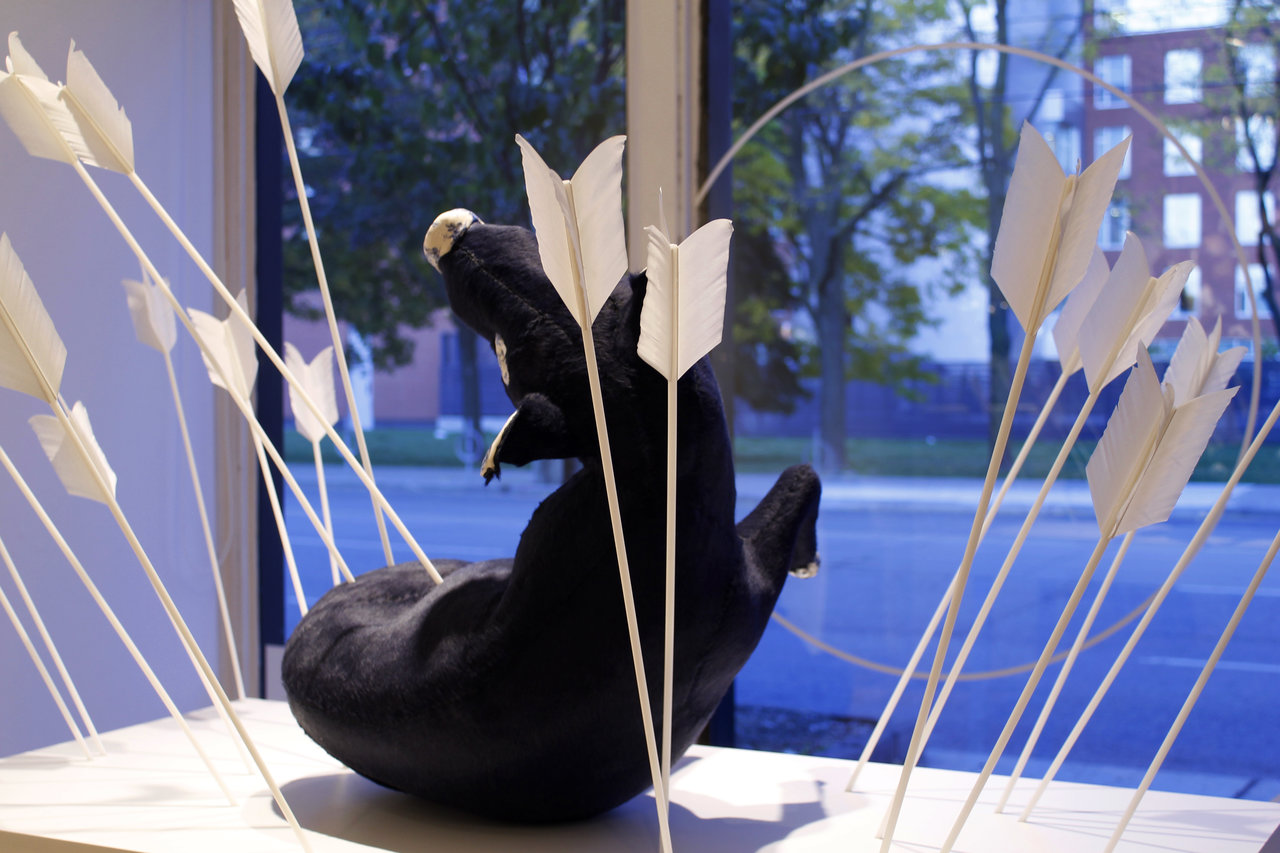 David R. Harper, Better the Devil You Know, cowhide, polyurethane, cast acrylic, extruded acrylic, marine epoxy, ceramic epoxy, decals, feathers, wood
David R. Harper, Better the Devil You Know, cowhide, polyurethane, cast acrylic, extruded acrylic, marine epoxy, ceramic epoxy, decals, feathers, wood
David R. Harper focuses on the historical methods of ornamentation in depicting nature, particularly embroideries. His works generally involve intricately woven images that directly interact with the animal subject, creating a relationship that ultimately favors the human presence. His largest installation, Better the Devil You Know, displays a boar woven from blue regal fabrics that is bombarded and impaled by a flurry of arrows; the beast writhing in agony as they pierce his flesh. Historically, boars are associated with the nobility not only because their meat is reserved for the lavish feasts of monarchs and wealthy lords, but also because to hunt a savage boar was regarded as an impressive act of bravery to be celebrated. Harper deliberately chose this particular moment to immortalize in sculpture: the moment when the hunters enjoy the satisfaction of slaughtering the dangerous beast while the boar contorts and screams at its own excruciating demise. His other works, though less dramatic than Better the Devil You Know, use similar strategies of elaborate embroidery and regal imagery to express the establishment of a hierarchy between animal and human.
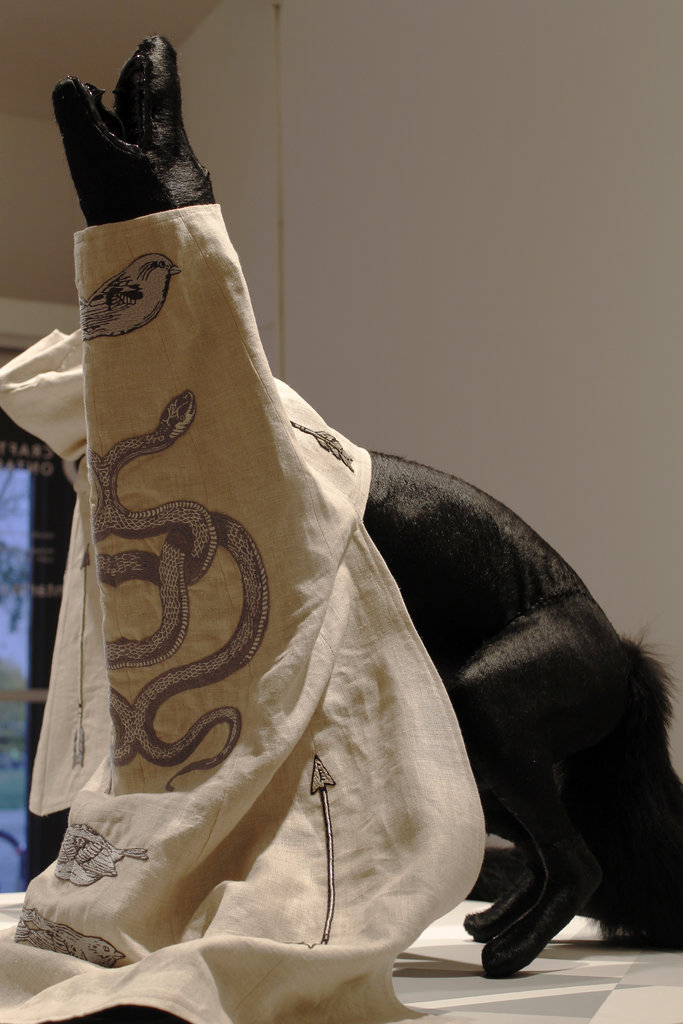 David R. Harper, Losungen (results/solution) (crouching), cow hide, linen, cotton embroidery floss, glass beads, polyurethane, wood, enamel
David R. Harper, Losungen (results/solution) (crouching), cow hide, linen, cotton embroidery floss, glass beads, polyurethane, wood, enamel
Julie Moon’s works concentrate on the manipulation of the materials that then fuse with naturally-inspired subject matter. Within Grasp, for example, she uses the earthly material of clay along with the artificially-generated porcelain and gold lustre to explore the central theme. The tone is much gentler than Harper’s, the conveyed relationship of the hand and the flower seems more symbiotic than predatory. The flower does not rest on the palm, but instead merges with it, as if the roots extended peacefully throughout the sinews of the hand. Here there seems to be a more integrated and tranquil coexistence of the subjects. Moon’s works, on the whole, show the same interaction between man and the environment as being exquisite, beautiful, and generally serene, since nature remains the originating point of humanity.
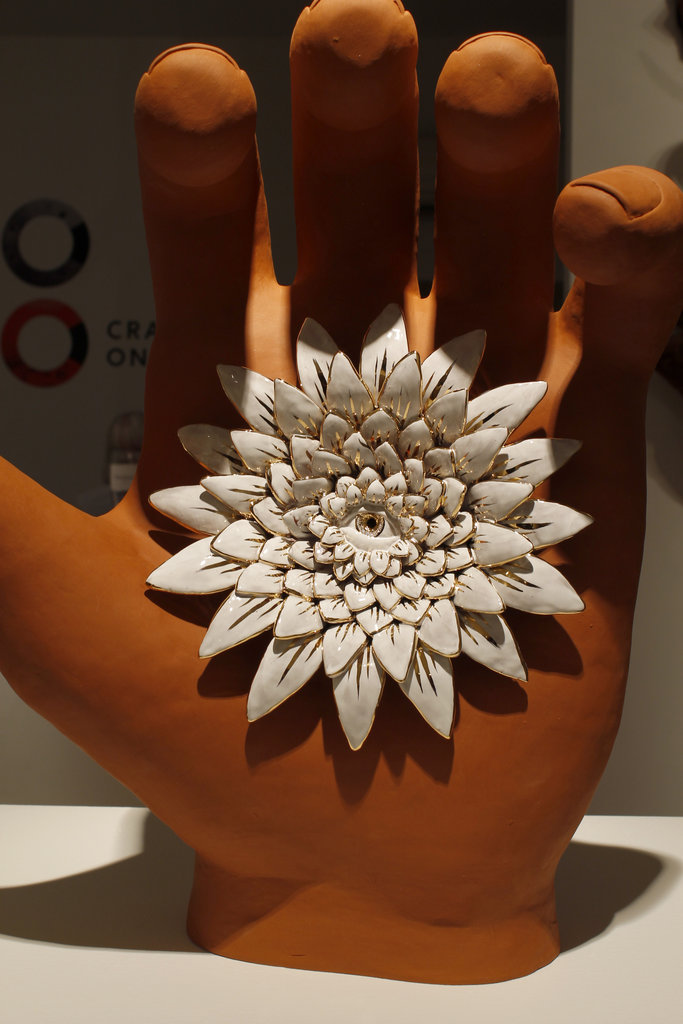 Julie Moon, Within Grasp, earthenware, glaze, gold lustre
Julie Moon, Within Grasp, earthenware, glaze, gold lustre
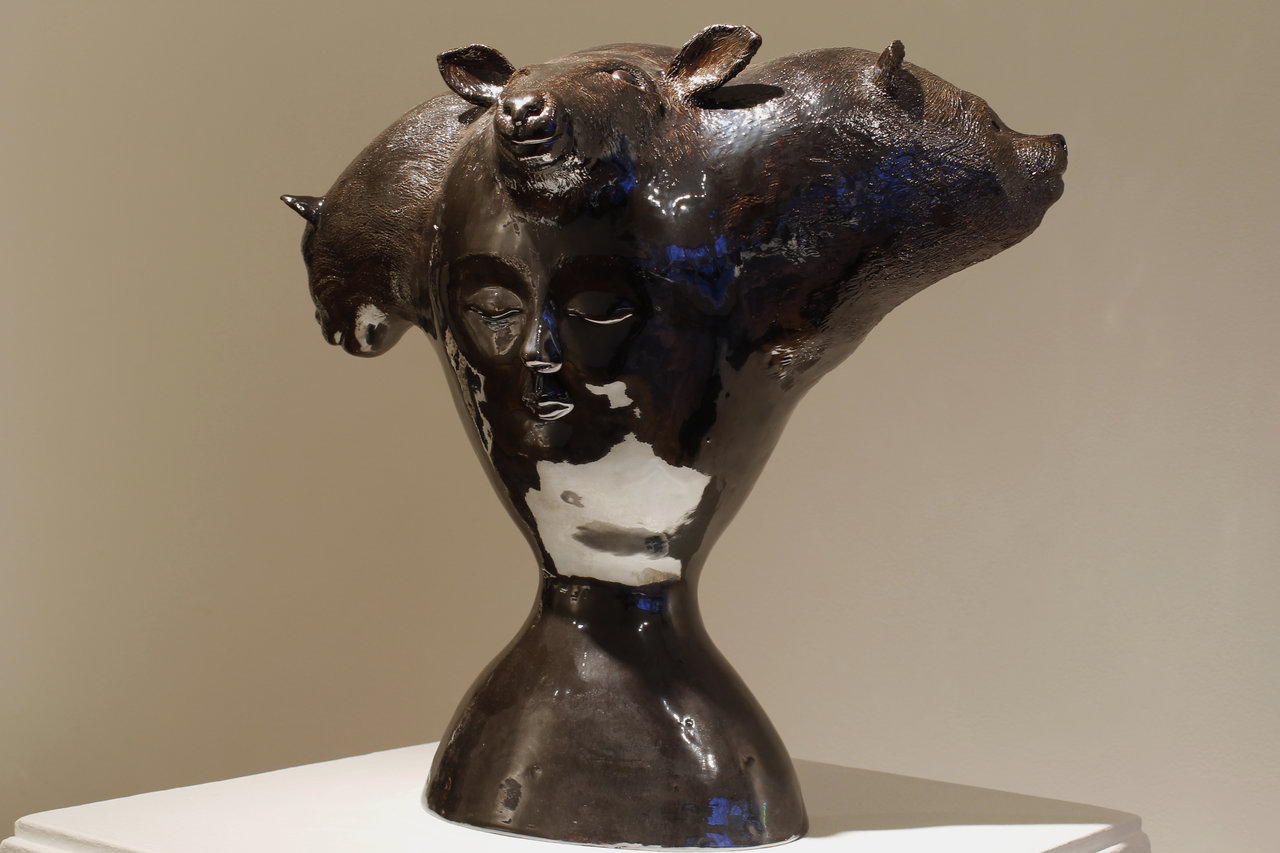 Julia Moon, Animal Thoughts, porcelain, glaze
Julia Moon, Animal Thoughts, porcelain, glaze
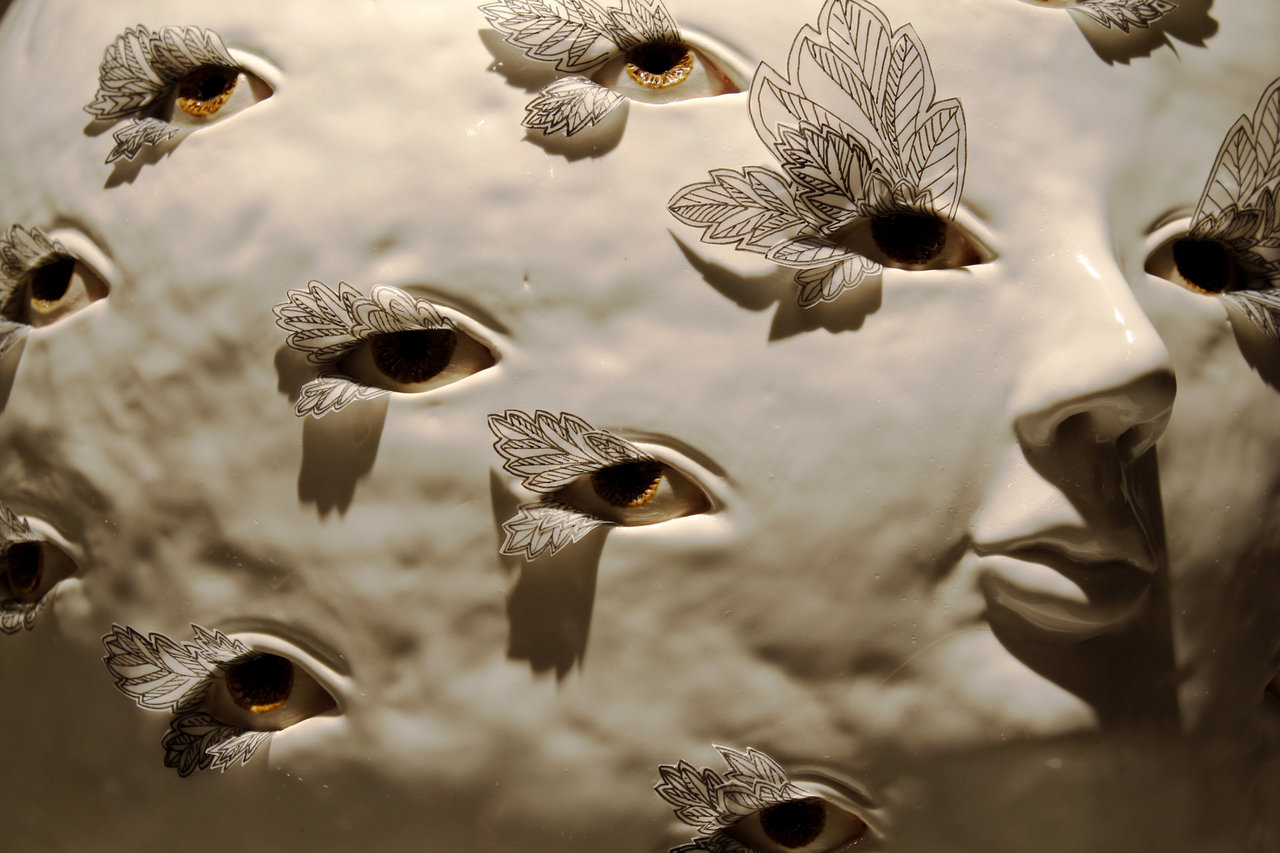 Julie Moon, Sight Flight, porcelain, glaze, mylar, ink
Julie Moon, Sight Flight, porcelain, glaze, mylar, ink
The largest piece in the exhibition, contributed by Morgan Mavis and the Contemporary Zoological Conservatory, is an assortment of mounted animal heads and complete birds, domestic and foreign, entitled Entanglements. Taxidermy is a strong illustration of the concept of fusing specimen and artifact. The animal naturally exists as a specimen of the environment; it is a spectacle with its own unique patterns and characteristics that can be admired. As a wall mount, the animal becomes a fetish object associated with ownership and dominance. It is now a possession that emphasizes its inferiority to man, transforming into an ornament that is admired as an overt display of the possessor’s status. No longer is it an example of a primal existence; the creature has manifested into a cultural artifact with entirely new meaning.
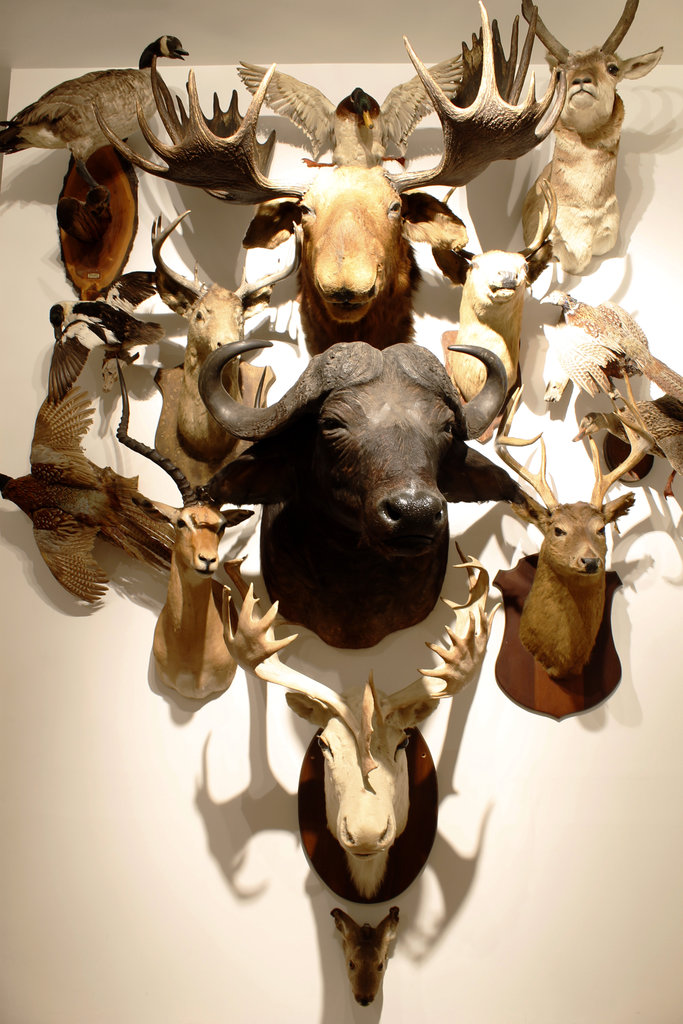 Morgan Mavis, Entanglements, antique taxidermy mounts from the Contemporary Zoological Conservatory
Morgan Mavis, Entanglements, antique taxidermy mounts from the Contemporary Zoological Conservatory
The interpretation of the relationship between nature and humanity vary greatly among different cultures, whether it is as an inherent component of our biological heritage or as an obstacle to be subdued and monumentalized for an outward demonstration of one’s own legacy. Nature can exist in society as either a specimen of our world or as an artifact of our imposed cultural values.
Text and photo: Simon Termine
*Exhibition information: October 16 – November 22, 2014, Craft Ontario Gallery, 990 Queen Street West. Gallery hours: Mon – Sat 11 – 6 p.m.
